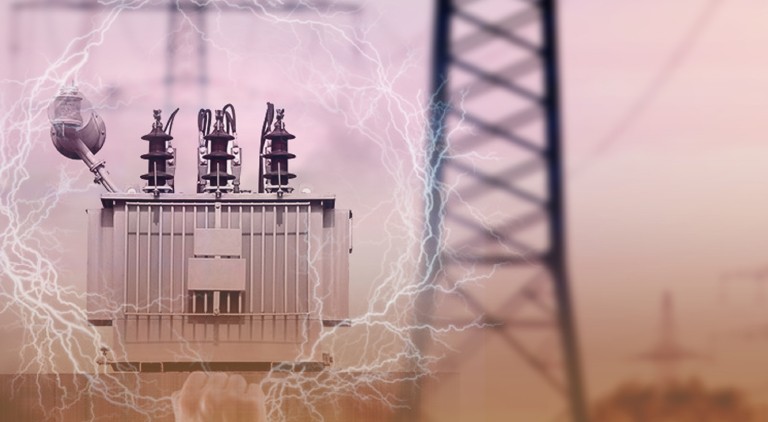Routing power transformers to smartness and fault-free
By EPR Magazine Editorial April 5, 2019 6:03 pm IST
By EPR Magazine Editorial April 5, 2019 6:03 pm IST

An overview on what kind of ‘smart’ operating and maintaining are done in power transformers and tools, used to diagnosis multiple faults in transformers.
Conventional maintenance of transformers runs the risk of failure between scheduled maintenance even if it is done in a planned manner or at periodic intervals. A Spokesperson for Tata Power says, “Under ‘smart’ operating and maintaining systems, we use a host of sensors, microprocessors and diagnostic software tools to monitor what goes on inside the hardware on a real time basis and deal with issues ahead of breakdown.”
Failure to detect problems at an early stage or avoid them from happening can be very expensive for utilities both as financial loss and reputation from a reliability point of view. Common reasons for the failures in transformers include switching surges, voltage spikes, line faults/flashovers etc.
Conventional transformer maintenance, which is primarily based on time-based procedures is implanted to prevent unplanned failures and includes laboratory tests, electrical tests and replacement of defective parts. However, Tarun Garg, Head of Engineering and Digitalisation, Transformers, ABB India Limited, states, “Smart transformer maintenance through transformer condition monitoring software with predictive analysis helps, support and prioritise maintenance activities, which are mainly condition based.”
Major targets of smart maintenance are determining quantifiable risk, maximising life expectancy and optimising asset utilisation with goal to reduce operation costs, reduced maintenance costs and lower insurance premiums. Condition monitoring is supported by a host of smart sensors and devices which provide transformer’s vital parameters in online mode.These are collected and organised along with offline data from various transformer assets or data lakes; processing of data through software tool and resulting in a comprehensive analysis viewed through an HMI interface and capable of generating asset health reports to bring out maintenance actions. Some of the specific maintenance steps for power transformer health are as below:
Predictive power transformer maintenance
Garg says, “Predictive transformer maintenance is a more prudent approach as compared to the conventional maintenance. It optimises resources and cost by avoiding un-necessary downtime of expensive assets and thus optimise asset life and performance, while alerting operating personnel of the incipient issues.”
Early warnings are received against mechanical faults such as short-circuit, winding displacement and looseness, electrical faults such as partial discharges, over-voltages, through faults, arcing etc., in addition to thermal faults such as cooling issues, insulation ageing, overloading and overheating of connections. Bushings, tap changers and oil preservation system are also integrated to the centralised monitoring system to assess their condition and keep them up to date. Predictive approach is aided by online design parameters, historical trends to give maintenance recommendations.
A Spokesperson for Tata Power says, “Today AI-based diagnostic and maintenance tools are available for utilities of all sizes to deploy predictive power transformer maintenance. As mentioned earlier, early warning systems through real-time data collection using sensors and microprocessors can avoid most failures well ahead before it actually occurs.” This is vital for utilities who wish to offer uninterrupted services to their customers. Breakdown of power systems (including transformers) can have serious consequences too where uninterrupted power is vital like in the case of healthcare services and large industrial consumers.
Diagnostic tools for fault detection in a transformerApart from the on-line DGA Garg adds, there are other types of on-line monitoring systems to monitor the health of operating transformers continuously. These can be monitored from remote also using communication networks compatible to IEC 61850 protocol. Some of them are for bushing health and transformer insulation condition. Advanced tools and tests are available like SFRA (sweep frequency resonance analysis) for diagnosis of specific faults such as physical damage to windings, DFRA (dielectric frequency response analysis) to determine moisture content in insulation and health of bushing insulation, polarisation and depolarisation test to check moisture content and dynamic resistance test for tap-changer condition.
In addition to electrical tests, Tata Power is also taking into account the following for assessing transformer health:
Predictive approach is aided by online design parameters, historical trends to give maintenance recommendations
Tarun Garg, Head of Engineering and Digitalization, Transformers, ABB India Limited
AI-based diagnostic and maintenance tools are available for utilities of all sizes to deploy predictive power transformer maintenance
Tata Power Spokesperson
We use cookies to personalize your experience. By continuing to visit this website you agree to our Terms & Conditions, Privacy Policy and Cookie Policy.